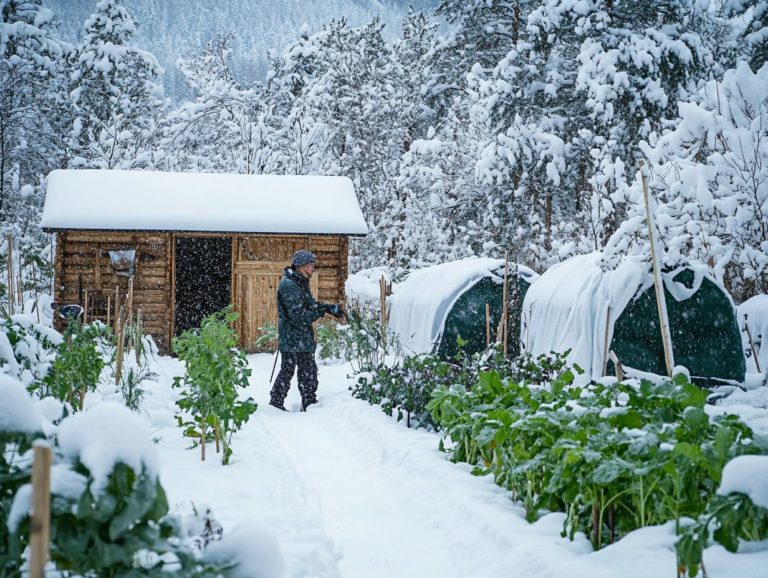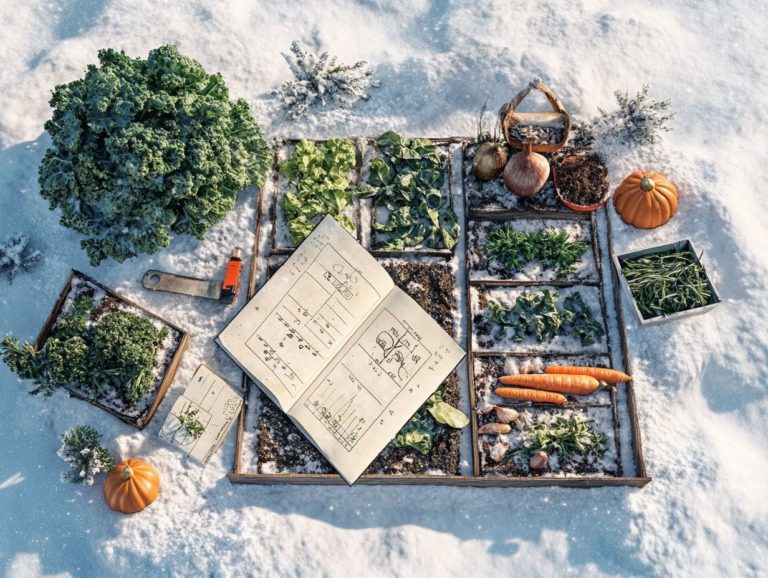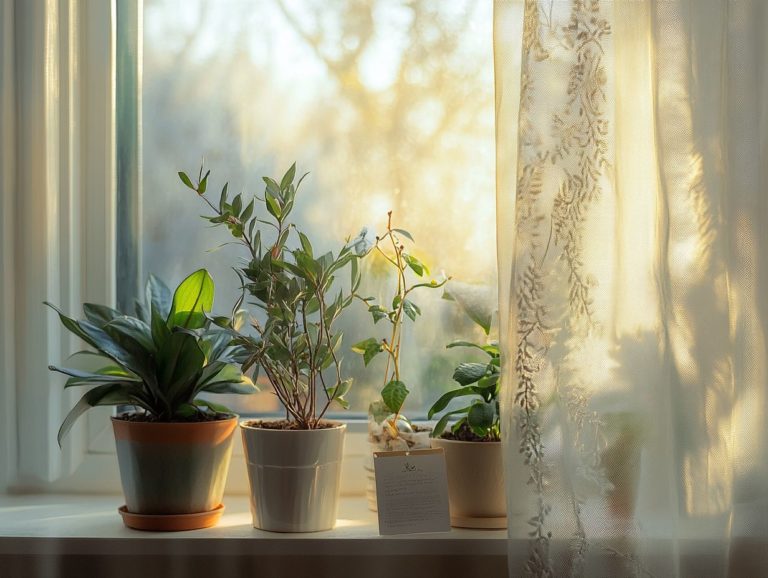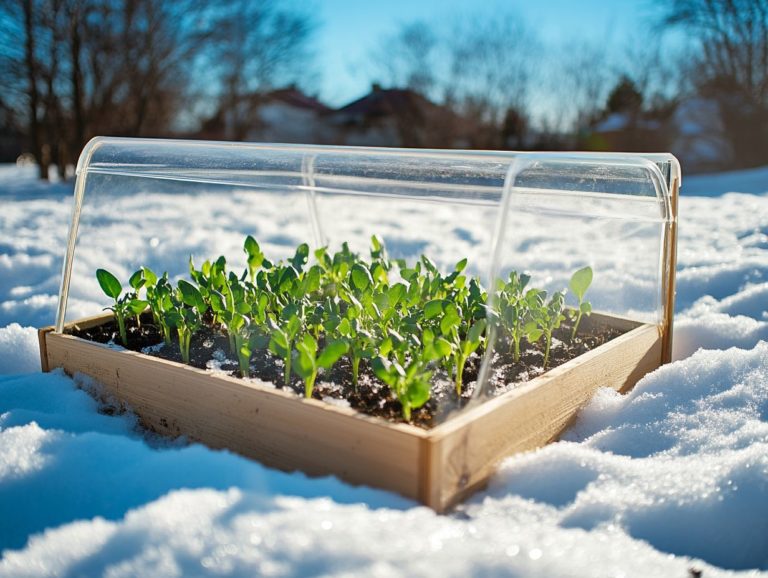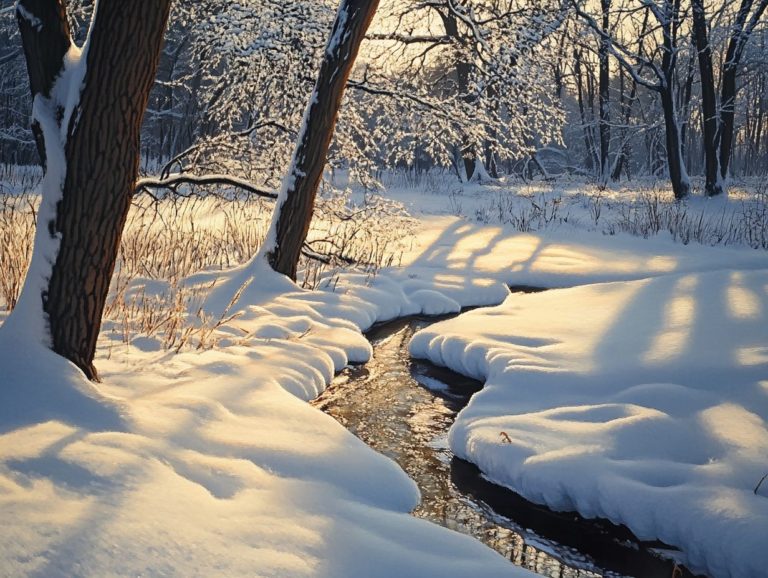Best Practices for Winter Planting
Winter might strike you as an odd season for gardening, yet planting during these colder months presents remarkable advantages for both you and your plants.
This article delves into the myriad benefits of winter planting, highlighting the types of plants that flourish in frosty conditions and the essential preparation techniques you should consider for your garden.
You ll also uncover effective planting methods, the best practices for caring for your winter garden, and the common pitfalls you ll want to sidestep.
Embrace the season and explore how winter can transform into a bountiful time for your garden!
Contents
- Key Takeaways:
- Benefits of Winter Planting
- Choosing the Right Plants for Winter
- Preparing Your Garden for Winter Planting
- Winter Planting Techniques
- Maintaining Your Winter Garden
- Common Mistakes to Avoid
- Frequently Asked Questions
- What are the best practices for winter planting?
- Can I plant in the winter?
- How do I choose the right plants for winter planting?
- What is the best way to prepare the soil for winter planting?
- How can I protect my plants during the winter?
- Are there any specific watering and fertilizing practices for winter planting?
Key Takeaways:
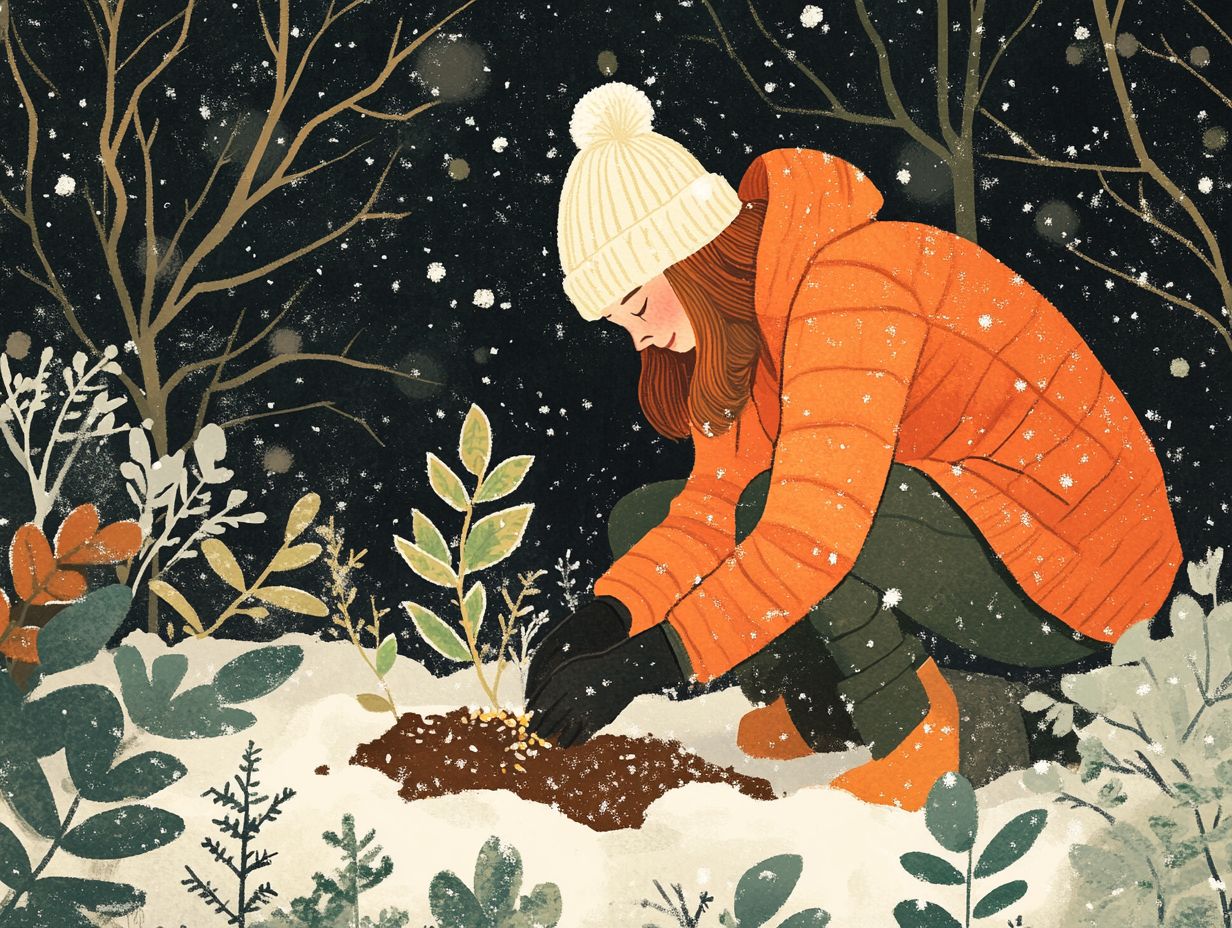
Benefits of Winter Planting
Winter planting presents a wealth of advantages for both you and your plants, enabling you to cultivate a variety of cold-season crops like leafy greens, root vegetables, and alliums. To make the most of this season, check out winter planting: what you need to know.
By embracing winter vegetable gardening techniques, you can effectively extend your gardening season and savor the pleasure of homegrown produce throughout the year. This endeavor not only encourages plant growth during the chillier months but also enriches your emotional well-being as you engage in sustainable practices and enjoy the fruits of your labor.
As temperatures dip and daylight wanes, your winter garden can continue to thrive with the right knowledge and techniques at your disposal.
Advantages for Plants and Gardeners
The benefits of winter planting go well beyond just helping your crops survive; they can significantly boost plant growth and enhance your emotional well-being as a gardener.
In the colder months, certain winter vegetables like kale and spinach don t just survive they flourish, showcasing their impressive resilience in lower temperatures. This seasonal gardening strategy allows you to lighten your workload, as winter crops typically demand less care and maintenance.
Engaging in winter gardening can serve as an effective remedy for Seasonal Affective Disorder (SAD). Tending to your plants in a tranquil, snowy setting offers a unique form of therapy. Nurturing these green companions can elevate your mood while also providing fresh produce to enjoy during the frosty months.
Choosing the Right Plants for Winter
Selecting the right plants for winter is essential for cultivating a thriving winter garden. Embrace a variety of cold-season crops, such as leafy greens, root vegetables, and robust cruciferous options like cabbage and kale.
By carefully choosing vegetable crops that flourish in cooler temperatures, you can optimize your garden space even during the colder months. Consider incorporating alliums like garlic and onions, along with resilient herbs, which are crucial for a thriving winter vegetable garden, to ensure a diverse array of homegrown produce throughout the winter season.
Types of Plants that Thrive in Winter
Several types of plants flourish during the winter months, making them excellent choices for winter vegetable gardening. Leafy greens like spinach and nutrient-rich root vegetables such as carrots and beets take center stage in this seasonal bounty.
Take kale, for instance. This hardy green not only withstands the frosty embrace of winter but actually becomes more flavorful as the season unfolds. Varieties like ‘Winterbor’ and ‘Dwarf Blue Curled’ are particularly well-suited for colder climates, adding a vibrant touch of greenery to your garden.
Your winter crops can also include:
- Swiss chard, with its stunning and edible stems
- Various types of leeks
- Shallots, which hold their ground against frost and bring a robust flavor to your winter dishes
By incorporating a diverse range of these plants, you can cultivate a satisfying winter harvest that enriches your diet, even amid the chill.
Preparing Your Garden for Winter Planting
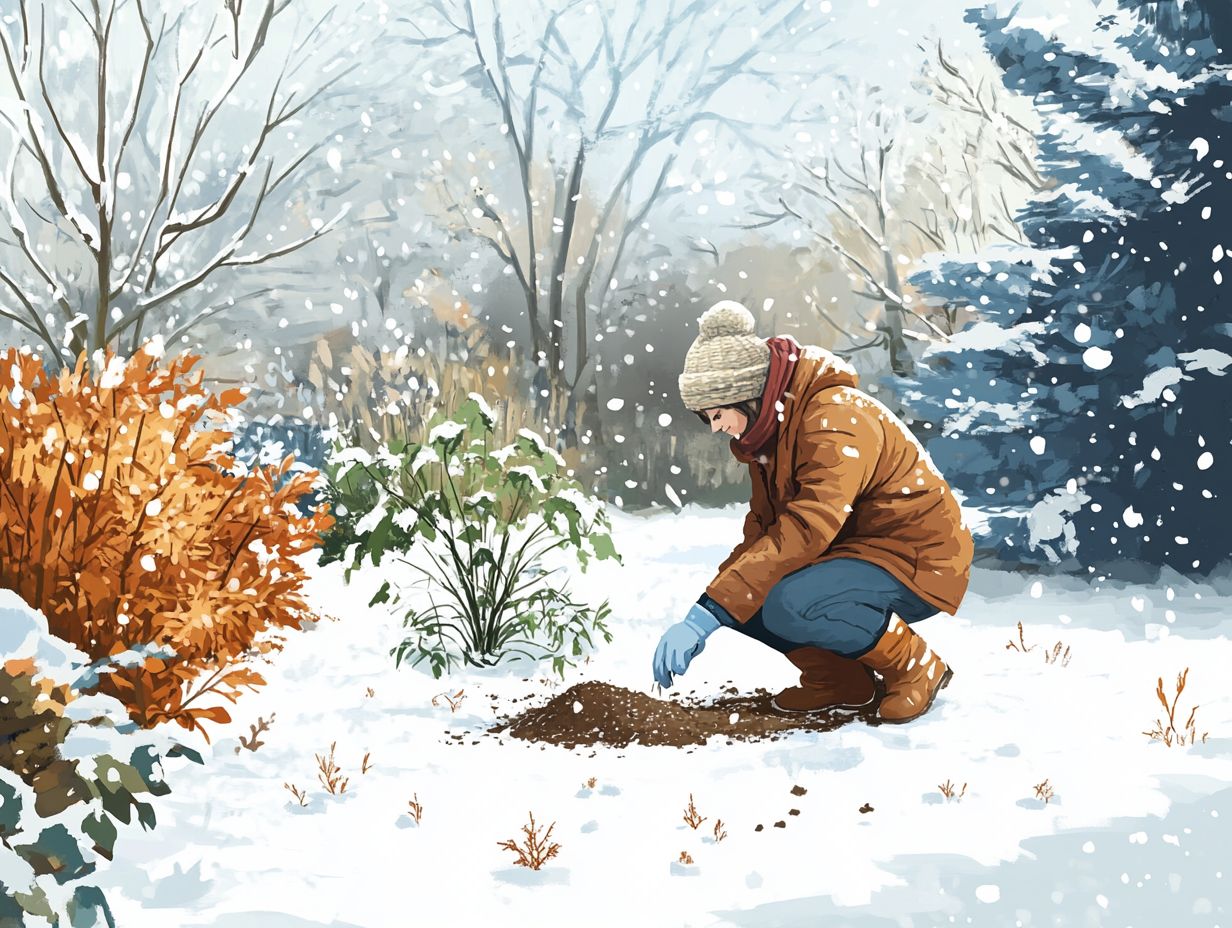
Preparing your garden for winter planting requires a thoughtful approach that sets the stage for optimal plant growth. Start with proper soil testing to assess its health. This plays a pivotal role in your success with cold season crops.
Incorporating compost is essential; it enriches the soil, providing the nutrients your plants need. As you cultivate your garden space, consider the implications of the Persephone Period the time when daylight hours start to increase on plant growth. By amending your soil with organic matter, you can skillfully extend your gardening season, allowing your greens to thrive even during the harshest months.
Soil Preparation and Protection
Effective soil preparation is crucial for winter planting. It sets the stage for optimal growth of vegetable crops and enhances the overall vitality of your garden, especially when following the top tips for planting in cold climates.
Start by assessing nutrient availability; soil testing is a wise first move. Collect samples and send them to a lab for a detailed analysis. This will unveil the pH levels and nutrient profiles essential for the specific crops you intend to cultivate.
Incorporating compost into your soil can significantly enhance its structure. This improvement aids both aeration and moisture retention two factors that greatly benefit plant roots.
To shield your delicate plants from harsh winter conditions, consider techniques such as applying mulch and using row covers. These methods create a protective barrier, preserving soil health and ensuring that your garden flourishes come spring.
Winter Planting Techniques
Effective winter planting techniques are essential for cultivating a thriving winter garden. To enhance your skills, it’s crucial to know best practices for winter seeding, enabling you to excel in vegetable gardening even when conditions are less than ideal.
By employing methods that enhance season extension like cold frames, hoop houses, and row covers you can dramatically boost plant survival rates and yields during the colder months.
These strategies optimize the growing environment and enhance the overall sustainability of your gardening practices. This ensures that your efforts yield fruitful results all winter long.
Methods for Successful Planting
To achieve successful planting during winter, you can employ various methods tailored to the unique demands of cold-season crops, including best practices for winter gardening.
Use techniques like direct seeding and transplanting to efficiently establish your garden even in frosty conditions. Timing is crucial during the Persephone Period, as it signals the ideal moment for sowing seeds.
Use protective covers, such as row covers or cloches, to keep your young plants safe from harsh weather. This creates a microclimate that nurtures growth. By mastering these strategies, you can significantly enhance the yield and health of your vegetable crops, ensuring a more fruitful harvest throughout the winter months.
Maintaining Your Winter Garden
Keeping your winter garden thriving requires consistent care and attention. This allows your plants to flourish and yield fresh produce even amid the challenging conditions of the winter months.
Caring for Plants during Winter Months
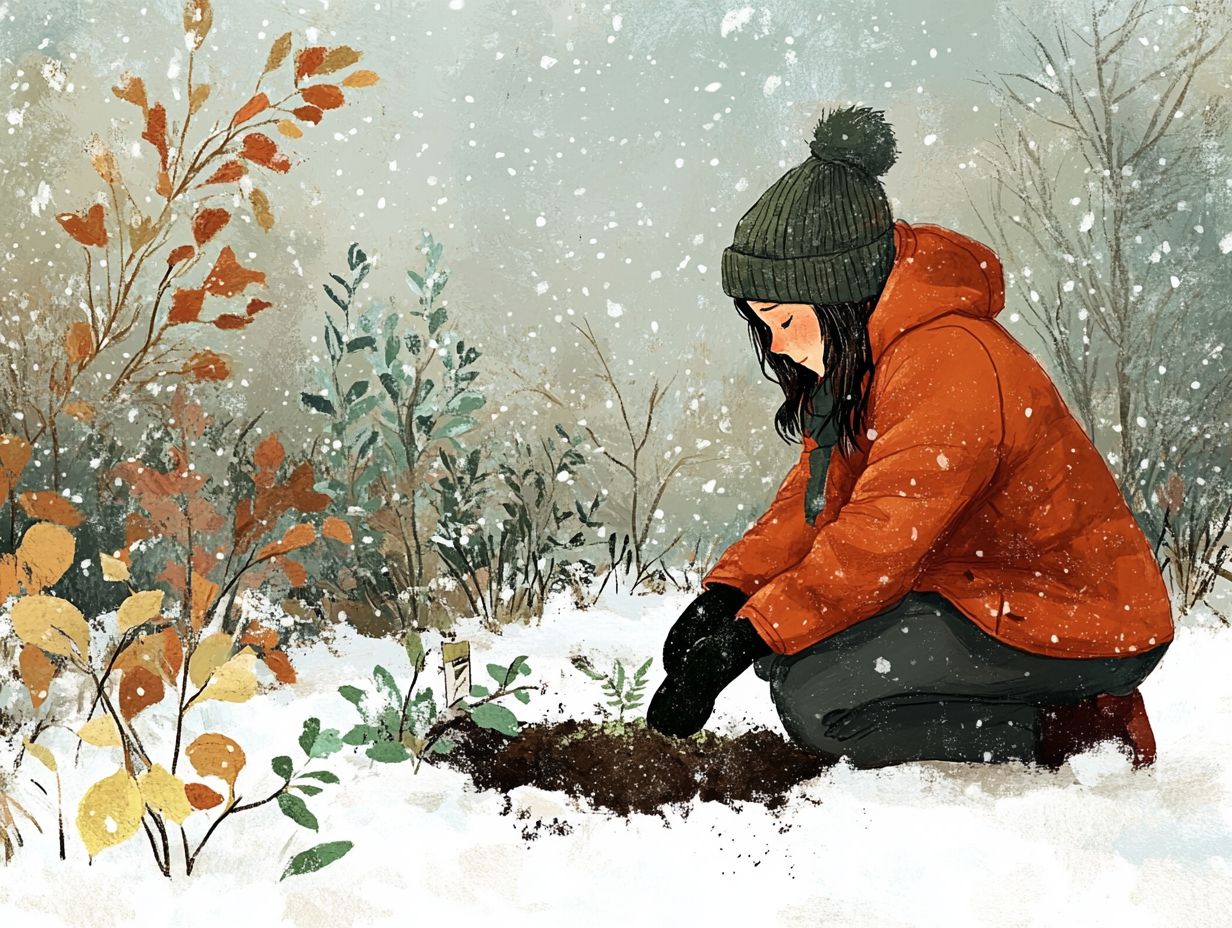
Caring for your plants during the winter months requires specific strategies that not only promote their health but also enhance your emotional well-being as you engage in caring for your plants.
Implement effective temperature management methods to create a favorable microclimate, ensuring those delicate roots stay insulated from the biting cold. Consider moisture retention techniques, like using mulch or water-retaining gels. These techniques prevent the soil from drying out too quickly, providing a consistent environment for growth.
Don t overlook protective measures against frost; covering your plants with frost cloth or relocating potted specimens to sheltered areas can make a significant difference.
By immersing yourself in these practices, you nurture your plants and enjoy the peace of mind that comes from witnessing the resilience and adaptability of your green companions thriving even in the harshest conditions.
Common Mistakes to Avoid
Being mindful of common mistakes in winter vegetable gardening can greatly enhance your gardening success. By recognizing these pitfalls, you can sidestep obstacles that may otherwise impede the growth of your plants.
Pitfalls and How to Avoid Them
Understanding the pitfalls of winter gardening is essential for your success in planting and maximizing yield in your winter vegetable garden.
By recognizing common mistakes like poor soil preparation or wrong plant selection, you can significantly enhance your chances of success. Proper planning starts with evaluating the specific needs of your winter crops, and planting garlic in winter is one of the best practices to ensure you choose the right varieties suited to your local climate.
Emphasizing soil health is equally vital. Adding organic matter helps plants get nutrients and grow strong. Using effective strategies like mulching which is covering the soil with materials to keep plants warm and protect them from cold will help protect your plants during harsh weather.
Thoughtful winter gardening encourages healthy produce and makes the whole process rewarding and sustainable.
Frequently Asked Questions
What are the best practices for winter planting?
Winter planting requires special care and attention. Some best practices include:
- Choosing hardy plants
- Preparing the soil
- Providing adequate protection from harsh weather conditions
Can I plant in the winter?
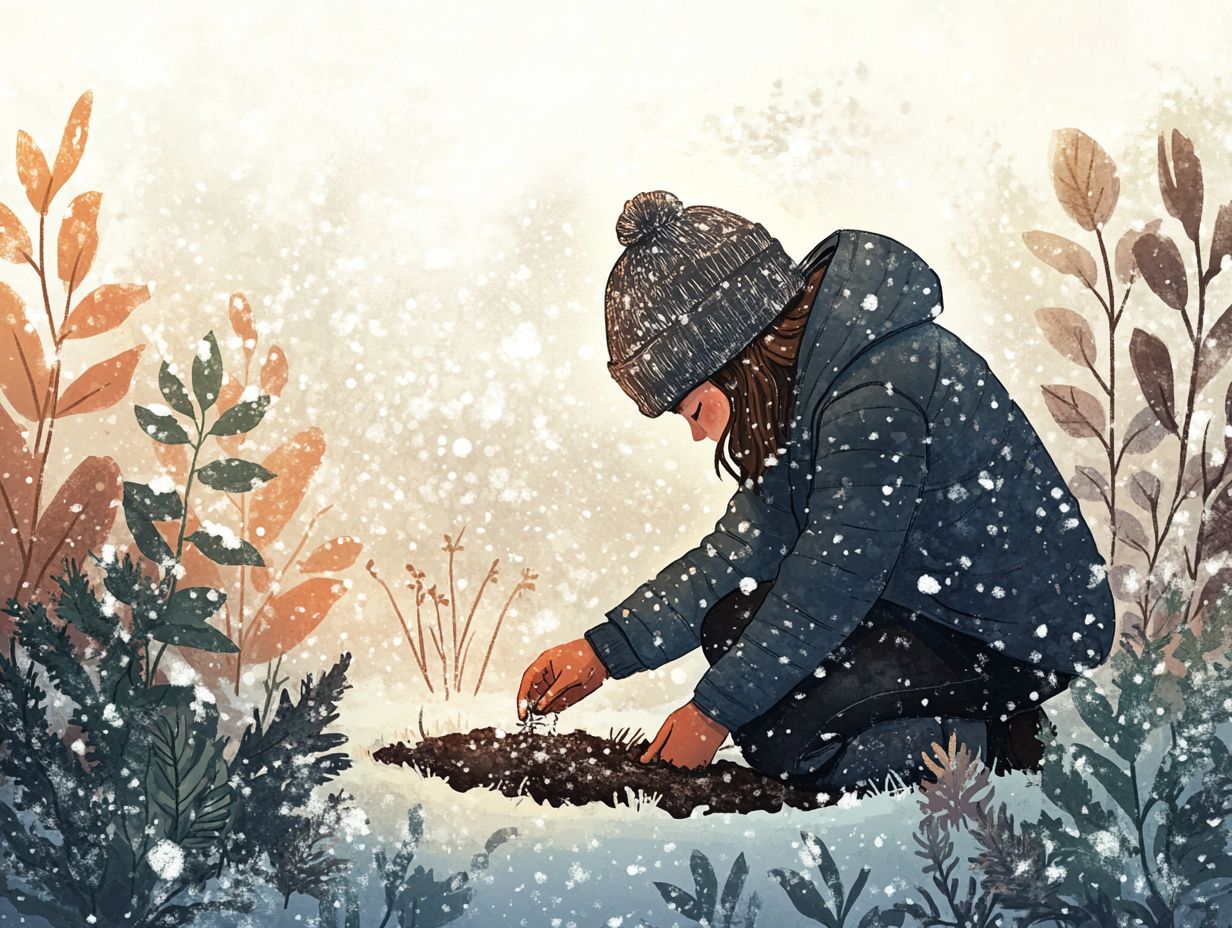
Yes, you can plant in the winter, but it requires following certain best practices for winter watering. Choosing the right plants and giving them the care they need is key!
How do I choose the right plants for winter planting?
When choosing plants for winter planting, look for hardy varieties that can withstand low temperatures and harsh weather conditions. To ensure the best results, learn how to prepare soil for winter planting. Consider:
- Evergreens
- Winter-blooming flowers
- Cold-tolerant vegetables
What is the best way to prepare the soil for winter planting?
Before planting, it is important to prepare the soil. This includes:
- Clearing the area of any debris
- Adding organic matter
- Ensuring proper drainage
Testing the soil pH can also be helpful in determining which plants will thrive in the area.
How can I protect my plants during the winter?
Providing adequate protection for your plants during the winter is crucial for their survival. You can:
- Use mulch
- Create windbreaks
- Cover your plants with cozy frost blankets
Are there any specific watering and fertilizing practices for winter planting?
Watering and fertilizing practices may vary depending on the type of plant, but in general:
- Water deeply and less frequently in the winter
- Avoid fertilizing during the winter as plants are dormant and do not need additional nutrients

